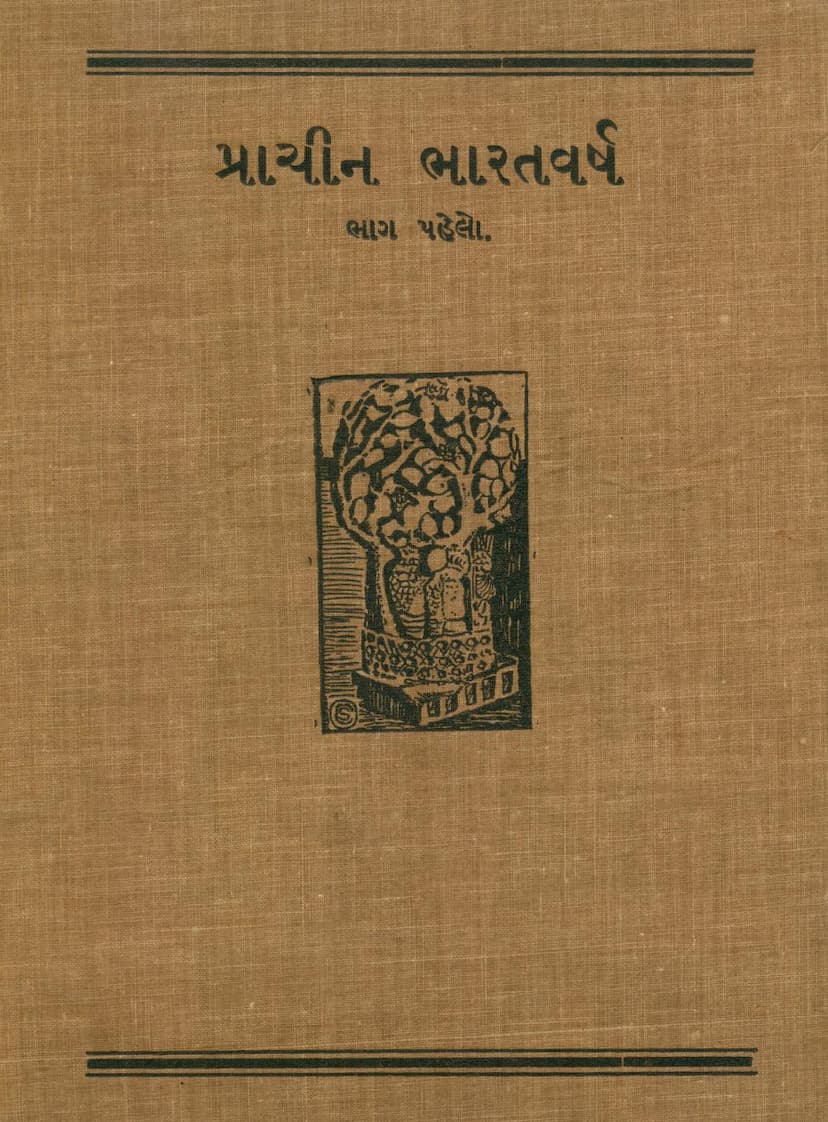Prachin Bharat Varsh Part 01
Added to library: September 2, 2025

Summary
This book is the first part of a series titled "Prachin Bharat Varsh" (Ancient Indian Subcontinent) authored by Tribhuvandas Laherchand Shah and published by Shashikant and Co. It covers the period from 900 BCE to 100 CE, a span of one thousand years of ancient Indian history.
The author aims to present historical facts based on ancient inscriptions, coins, and reliable historians, offering a novel perspective with new findings. The book is divided into four sections, and this is the first volume.
The initial pages of the book include:
- Page 1: Title page.
- Page 2: A Sanskrit invocation from Manasar, showing respect to those whose principles are based on all perspectives and who have realized this truth in their hearts.
- Page 3: A table of contents listing various sections: Motto, Compilation of Subjects, Nomenclature, Printing Statement, Beginning of the Book, Explanation of Abbreviations, Praise of the Book's Subject, Introduction to the Pictorial Series, and The Essence of the Book or The Book Itself.
- Page 4: Author's and Publisher's details. Author: Tribhuvandas Laherchand Shah, L.M.& S. Publisher: Shashikant & Co. Located opposite Ravpura Tower, in Vadodara.
- Page 5: Printing and publication details. First edition, 1250 copies. Published in V.S. 1991 (1935 CE). The complete set of four volumes is priced at twenty Rupees.
- Page 7: A sample inscription, likely from a coin or stone inscription, containing Siddham (a salutation indicating perfection), followed by details of place, lineage, and the name of the person who established a statue of Saraswati for the benefit of all beings.
- Page 8: A dedication to Shrimant Sarkar Sayajirao Gaekwad III, G.C.S.I., etc., acknowledging his appreciation for ancient Arya culture and his deep interest in ancient Indian research.
- Page 11: A comprehensive list of abbreviations used in the book, covering various historical and literary works, publications, and terms relevant to ancient Indian studies. Many of these are in Gujarati and English, citing authors like Vincent Smith, Cunningham, Jacobi, and publications like the Indian Antiquary, Journal of the Royal Asiatic Society, etc.
- Page 12-41: These pages contain a detailed preface ("Prashasti") by the author, explaining the genesis and development of the book. The author discusses the challenges of historical research, the difficulty in reconciling different historical accounts, and his personal journey in compiling this vast work. He emphasizes the importance of chronological order and corroborating evidence. He also touches upon his re-evaluation of figures like Ashoka and Priyadarshin, and the Nanda dynasty, which led to extensive research. The author details his efforts to publish his findings, including attempts to form a publishing company and the subsequent setbacks. He expresses his belief that historical understanding is crucial for national progress and outlines the methodologies used, including comparing different perspectives and relying on archaeological findings like rock edicts and coins. He mentions the vast scope of the book, covering approximately 2000 pages in its entirety, and the challenges of bringing such a monumental work to fruition. He also addresses potential criticisms of repetition or bias, asserting his commitment to presenting the truth as he understood it. The preface also delves into the author's personal reflections on the value of history, the importance of understanding one's past, and the need for an unbiased approach to historical research, especially concerning the contributions of ancient Indian civilization.
- Page 42: A publisher's statement ("Prakashak nu Nivedan") discussing the collaborative effort involved in publishing a book, acknowledging the challenges in India's book publishing industry compared to Western countries. It highlights the author's dedication and the publisher's commitment to bringing this work to the public despite the financial risks and complexities. The publisher also mentions the crucial role of Jain community institutions and individuals in supporting such knowledge-disseminating endeavors, noting a contrast with the community's current approach to supporting cultural and educational initiatives.
- Page 46-54: These pages contain the "Picture Introduction" ("Chitra Parichay"), describing the illustrations and maps included in the book. Notably, it mentions ancient images of the Kalpavriksha (wish-fulfilling tree) and Goddess Saraswati, dating back two thousand years. It also describes various maps illustrating ancient Indian geography, regions, kingdoms, and the evolution of territories over time, particularly focusing on the period covered by the book.
In essence, "Prachin Bharat Varsh Part 01" is a scholarly work by Tribhuvandas Laherchand Shah, aiming to provide a comprehensive historical account of ancient India from 900 BCE to 100 CE, supported by extensive research and a critical examination of various sources. The preface and publisher's notes reveal the author's deep commitment and the publisher's efforts in bringing this significant historical research to light.